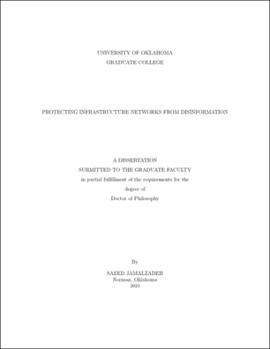| dc.description.abstract | Massive amount of information shared on online platforms makes the verification of contents time-consuming.
Concern arises when the misleading or false information, called "disinformation", is exposed to many online platform users who have potential to react on it.
The spread of disinformation can cause malicious consequences such as damage to critical infrastructure networks such as electric power, gas, and water distribution networks.
Imagine a fake electricity discount, shared by disinformation campaigns, is exposed to many users on Twitter encouraging them to shift their electricity usage to a specific peak hour.
If the population of users who engage with the fake discount exceeds a threshold, a blackout can happen due to the overconsumption of electricity.
Thus, users access and exposure to accurate information on time can reinforce the infrastructures which are backbone of well-being for societies and economic growth.
In this dissertation, we propose solutions to protect infrastructure networks from disinformation campaigns.
The solutions include:
(i) an integrated epidemiological-optimization (EPO) model involving a mixed integer linear programming model (MIP) and SIR (Susceptible, Infected, Recovered) model to protect physical infrastructure networks by counter disinformation (accurate information) spread in information networks,
(ii) a disinformation interdiction model to influence physical infrastructure commodity consumers with accurate information given the topology of social network,
(ii) a robust mixed integer linear programming model to propose solutions superior to the original EPO model under uncertain spread of disinformation scenarios.
We illustrate our proposed models with two different case studies: (i) a sub-network of the western US interconnection power grid located in Los Angeles County in California, and (ii) the New York City subway system. | en_US |
